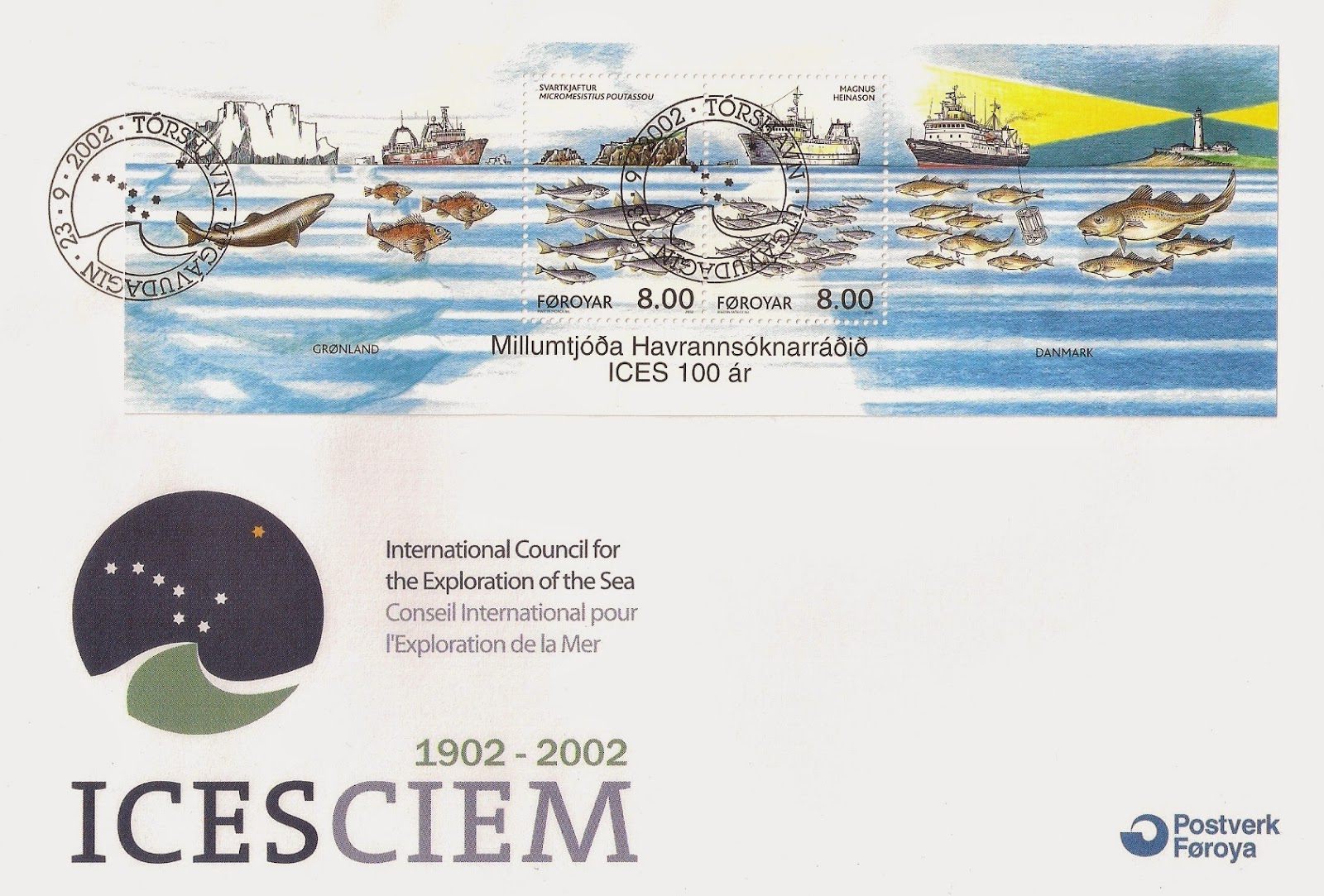The Faroe Islands two stamps appear in the middle of the miniature sheet. On the left - Blue Whiting (a member of the cod family) who swim near the surface at night and migrate to the bottom during the day. The stamp on the right features Atlantic Cod and a marine research ship named after Magnus Heinason, a 16th Century Faroese naval hero and privateer. The ship's home port is Torshavn and at the moment it is at sea just to the north of the Faroe Islands.
The Greenland section of the sheet on the left show a Greenland Shark and Deepwater Redfish. On the right is where Denmark's two stamps would appear and show Atlantic Cod with the rays of the Hirtshals lighthouse and the marine research ship Dana whose home port is the town of Hirtshals on the Jutland peninsula. Curious to know where it is at the moment? Looking on the Marine Traffic site it seems to be slap bang in the middle of the North Sea in-between North East England and Denmark.
ICES requests countries to reduce or stop fish catches for certain species based on its research and statistics, whether they do so is another matter. Spain issued a "Marine Species in Danger of Extinction" in 2013 featuring species on the edge
Top left - Basque Whale who live in shallow coastal waters and in the summer move to the colder water of the North Atlantic.
Top right - Bluefin Tuna, native to the Atlantic and Mediterranean and whose numbers have been decimated by overfishing
Bottom left - Monk Seal, lives in the Mediterranean and at great risk of extinction. The world would be a poorer place without the chance of seeing a seal.
Bottom right - Sea Lamprey - an anadromous species like the salmon which spawns in rivers and migrates to the sea. It did freak me out as a child when I saw a picture of its suction cup mouth and the result of it attaching to skin and rasping away at tissue with its sharp tongue and teeth. I have since seen one in reality coiling out of a rock but happily there was a sheet of glass between us and it looked rather languid.
I will finish with the more curious sea creatures on Albania's 1968 Marine Fauna series
the Squid, Lobster and Northern Whelk
Spiny Lobster and Green Crab
An entry to Viridian Postcard's Sunday Stamps theme of - Undersea Life here







5 comments:
Boy...these are not just PERFECT for today...but as stamps issues as well! So so so fascinating! I cant possibly pick a favourite! Each and every one of these is stunning in its own way! Thanks so much for sharing! Love this post!!
It's rather ironic that the Spanish should issue an 'endangered' species stamp as that have been accused of over fishing in others' territorial waters. The Albanian stamps are mindblowing; good for the Faroes too.
Delightful sets and mini-sheets! Now I would like to go to Maine and have some lobster. thanks for participating.
Viridian
Your ICES sheet is the one I like most, somehow preferring it to the stamps showing more exotic species.
oh wow these are AMAZING, love the perspective from which you see above AND under water. jealous!
Post a Comment